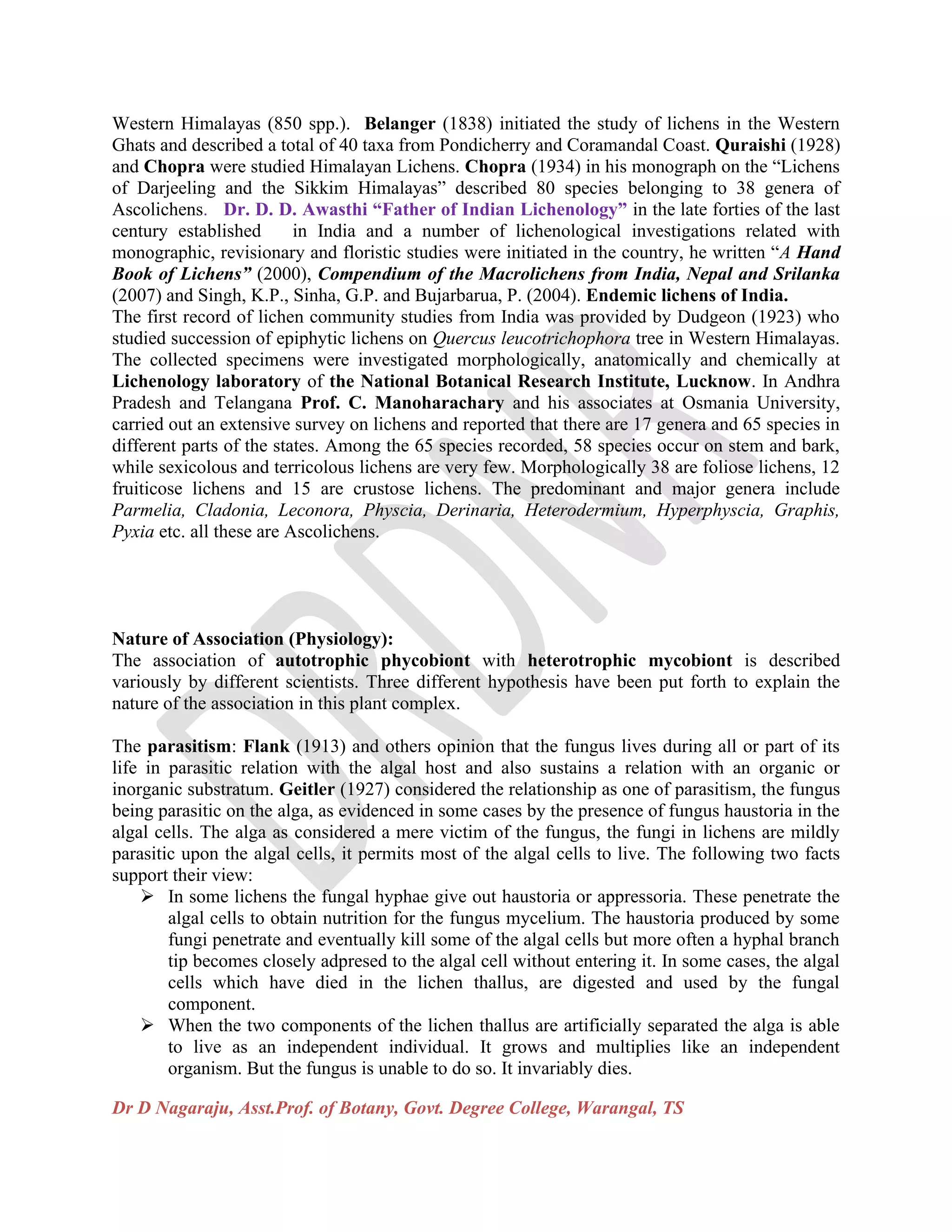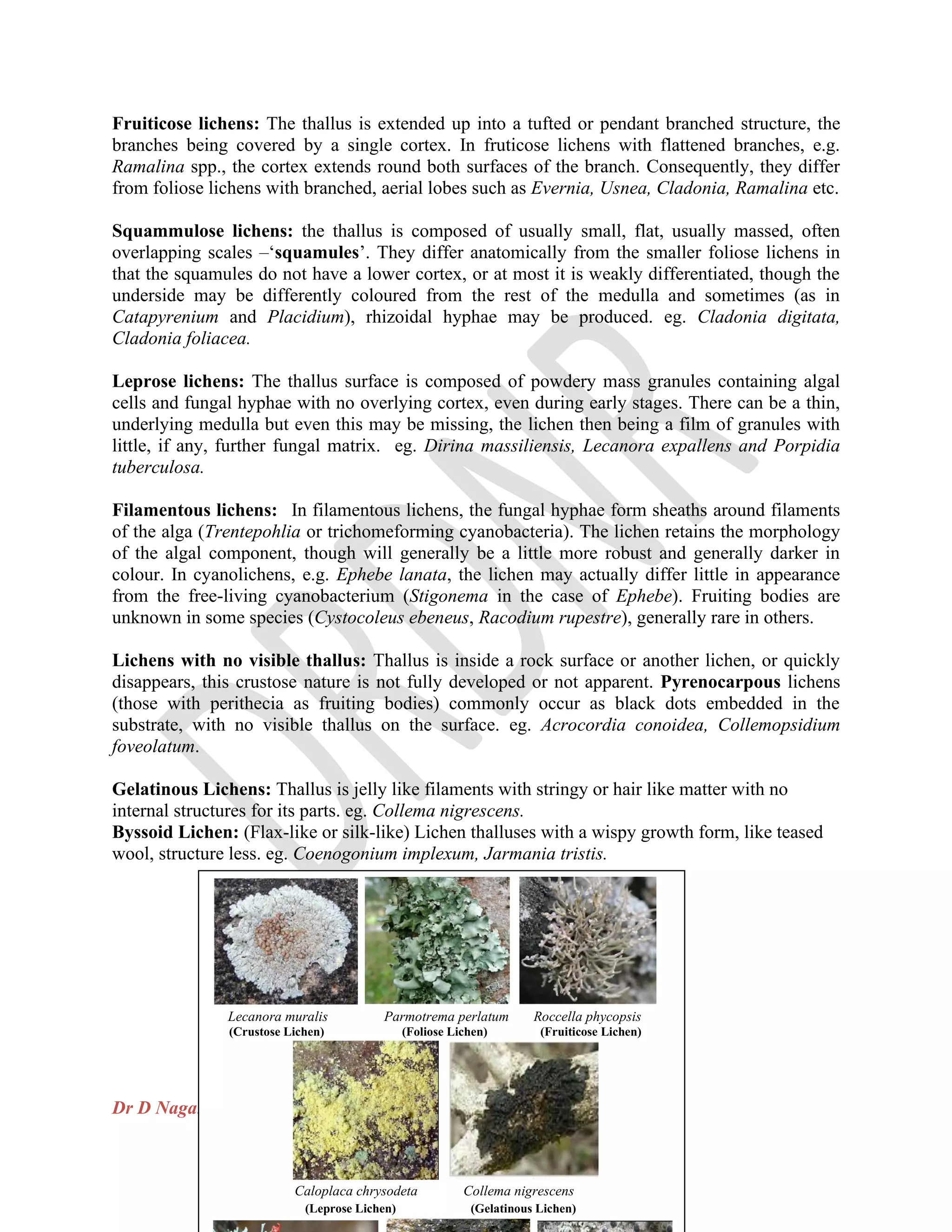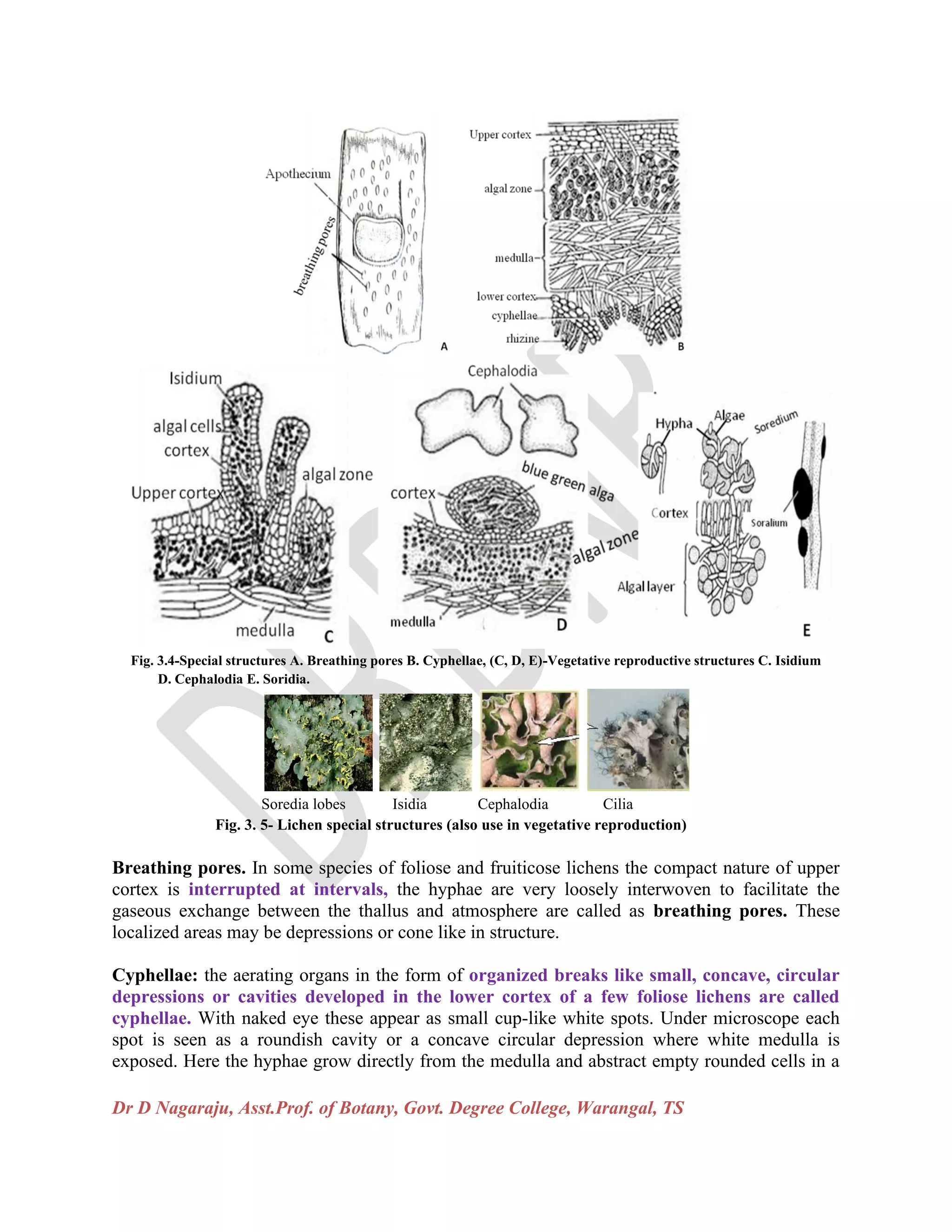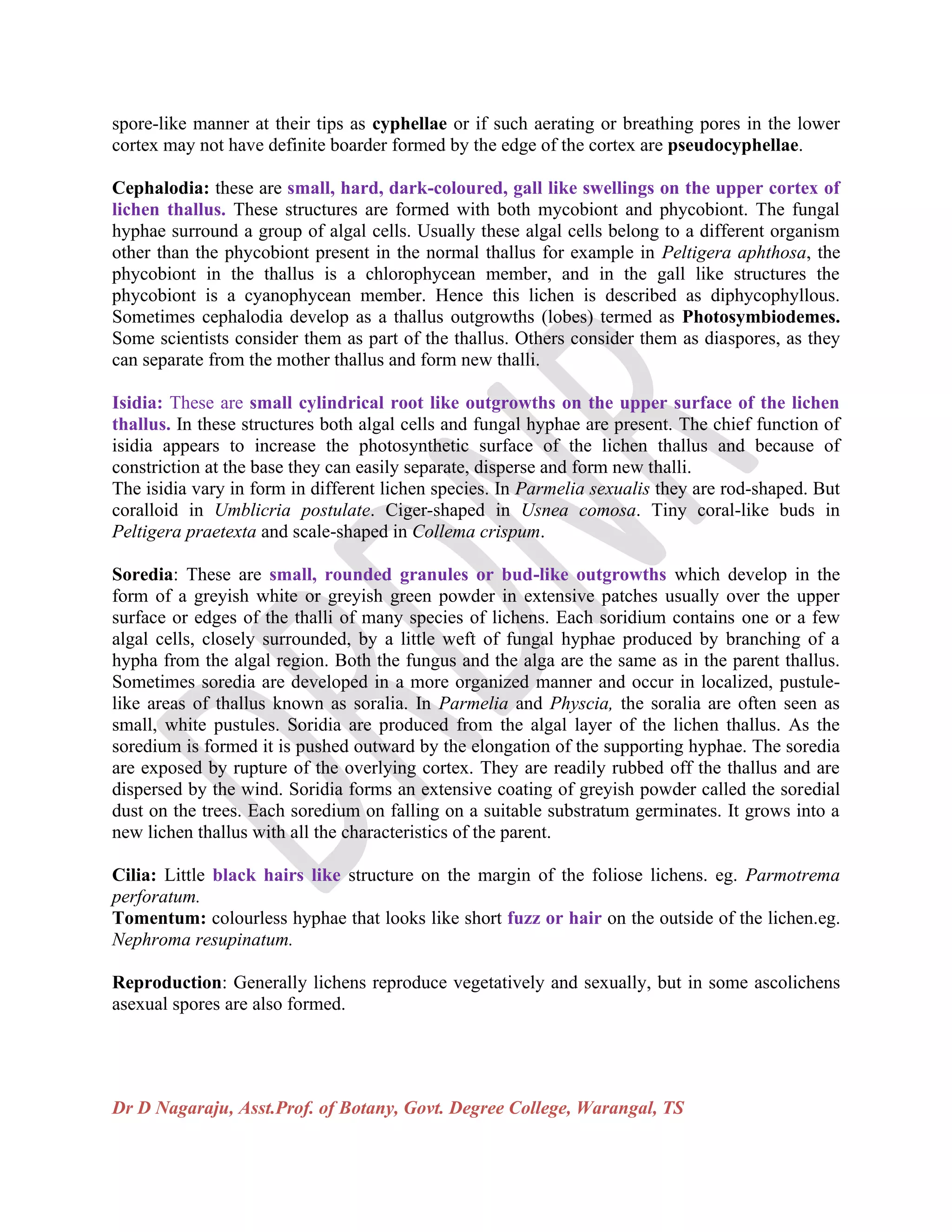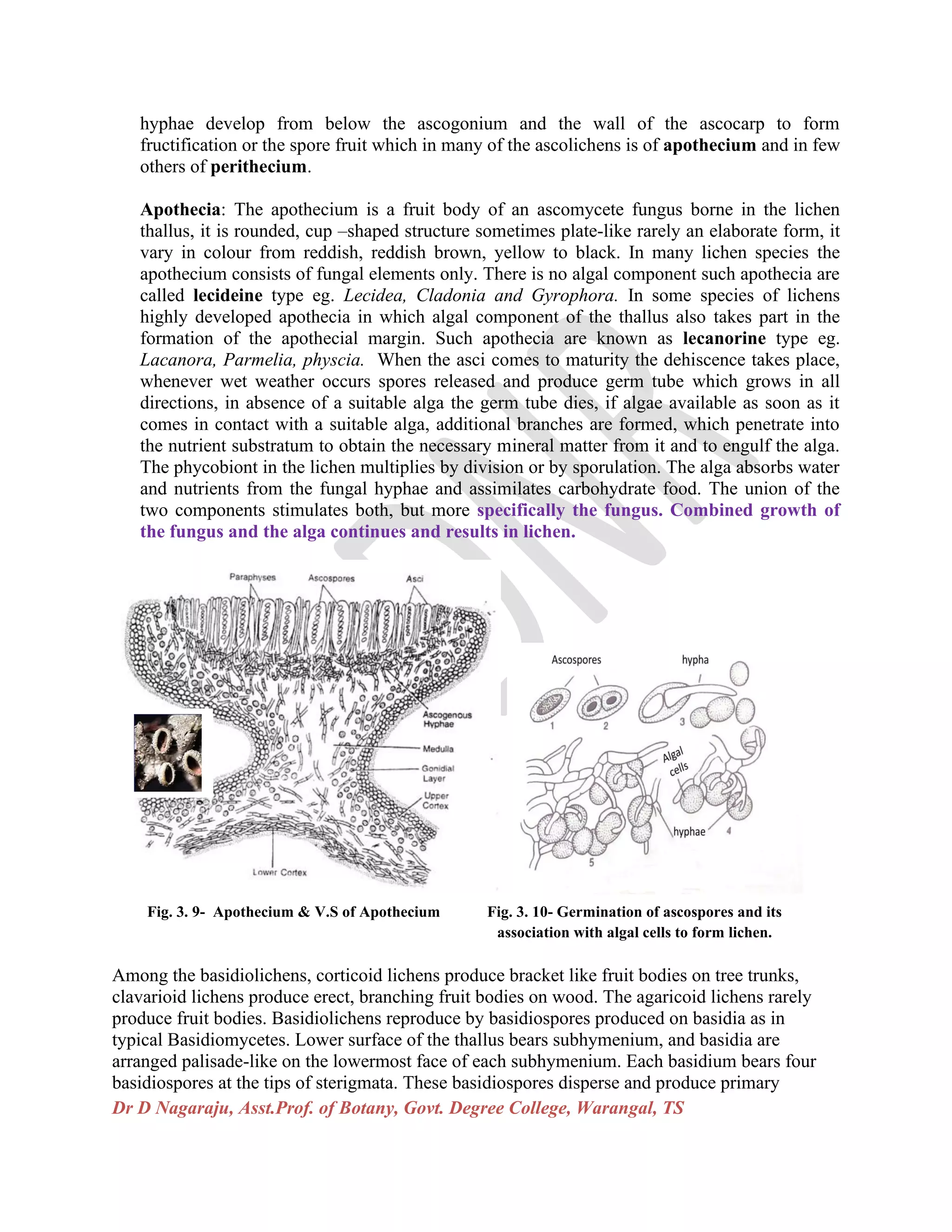Lichens are unique symbiotic organisms composed of a fungal partner (mycobiont) and an algal partner (phycobiont), with a significant role in ecosystems as pioneers that colonize bare surfaces. Their growth rate is slow, often less than a millimeter per year, and they can survive in extreme environmental conditions through a state of cryptobiosis. Notably, India is home to a rich diversity of over 2,040 species of lichens, with the Western Ghats being particularly diverse.





